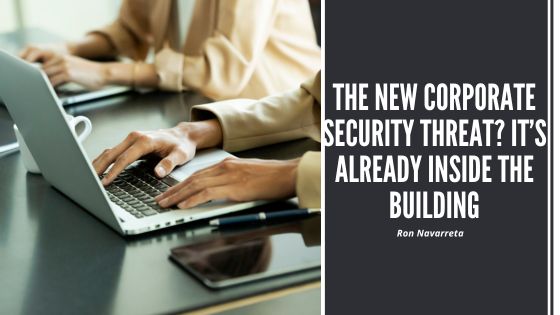When we talk about corporate security, most people think of high-tech firewalls, security badges, and a 24/7 surveillance system. But in today’s digital landscape, the most dangerous threat to your company might not be lurking in the shadows—it might already be sitting at a desk with a company email address.
Welcome to the era of the insider threat—where breaches aren’t just caused by hackers in hoodies, but by employees, contractors, and even well-meaning team members who unknowingly expose sensitive information.
Internal Doesn’t Always Mean Safe
It’s a tough pill to swallow, but not all security threats are external. In fact, more than 60% of data breaches now involve insiders, whether intentional or accidental.
Here’s how it happens:
- An employee clicks a phishing link.
- A contractor shares files using unsecured platforms.
- A disgruntled staff member downloads sensitive data before leaving.
- Someone posts a team photo online—with a password scribbled on the whiteboard in the background.
Even the most loyal team member can accidentally compromise your business if the right training and systems aren’t in place.
Human Error is the Weakest Link
You can invest millions in cybersecurity infrastructure, but it only takes one wrong click to bring everything down. This is why the best corporate security strategies don’t just focus on tech—they prioritize people.
Cybersecurity awareness training should be just as routine as onboarding paperwork or HR check-ins. Your team needs to know:
- How to spot phishing attempts
- Why public Wi-Fi is a no-go for sensitive work
- The dangers of using personal devices for work tasks
- How to report suspicious activity—without fear of blame
If your security strategy doesn’t account for human error, it’s not a complete strategy.
Remote Work = More Risk
As hybrid and remote work models become the norm, the risk surface expands. Employees are accessing company systems from personal devices, coffee shops, and unsecured home networks. Without proper controls, this is a goldmine for cybercriminals.
Consider enforcing:
- Mandatory VPN usage
- Two-factor authentication for all internal platforms
- Regular password updates
- Remote data wipe capabilities
And don’t forget the basics: remove access as soon as an employee offboards.
It’s a Culture, Not a Checklist
Corporate security isn’t a one-and-done initiative. It’s a culture—a mindset embedded into the DNA of your organization. It starts at the top, with leadership modeling secure behaviors and holding the entire team accountable.
Want your people to care about security? Make it personal. Show them how these same best practices can protect their own identity, finances, and data outside of work.
Final Thought
In 2025, the biggest threat to your company might not be a hacker breaking in—it could be an employee holding the door open, both literally and digitally.
Corporate security isn’t just an IT issue. It’s a business continuity strategy, a brand reputation safeguard, and, more than ever, a team-wide responsibility.
So ask yourself: is your team trained, aware, and empowered to protect what you’ve built?
If not, it’s time to secure the inside—before someone else does.

